Maldivian manta ray populations: perceptions of local dive communities and implications for conservation
2015
Nicola Bassett (MSc Marine Environmental Management - University of York)
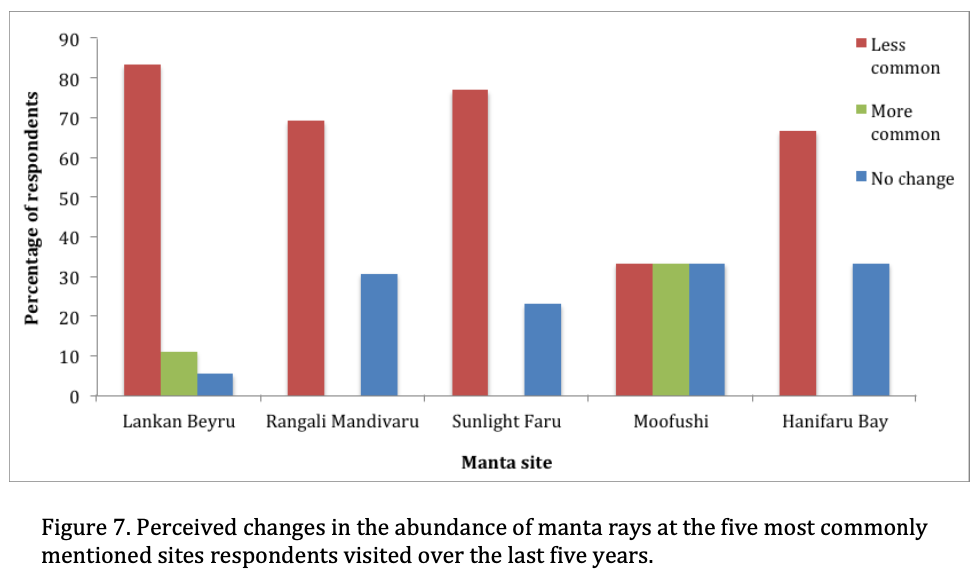
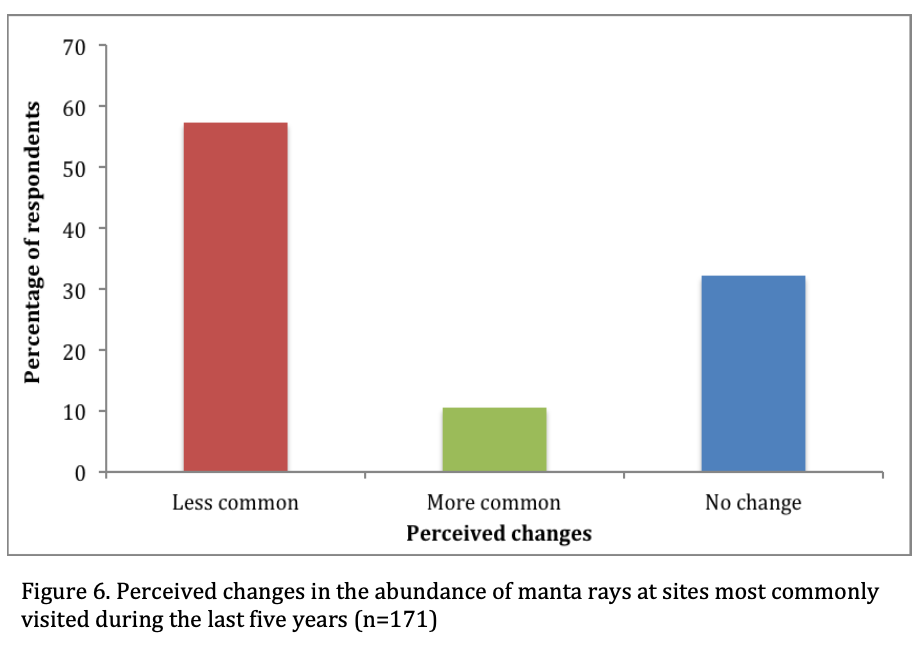
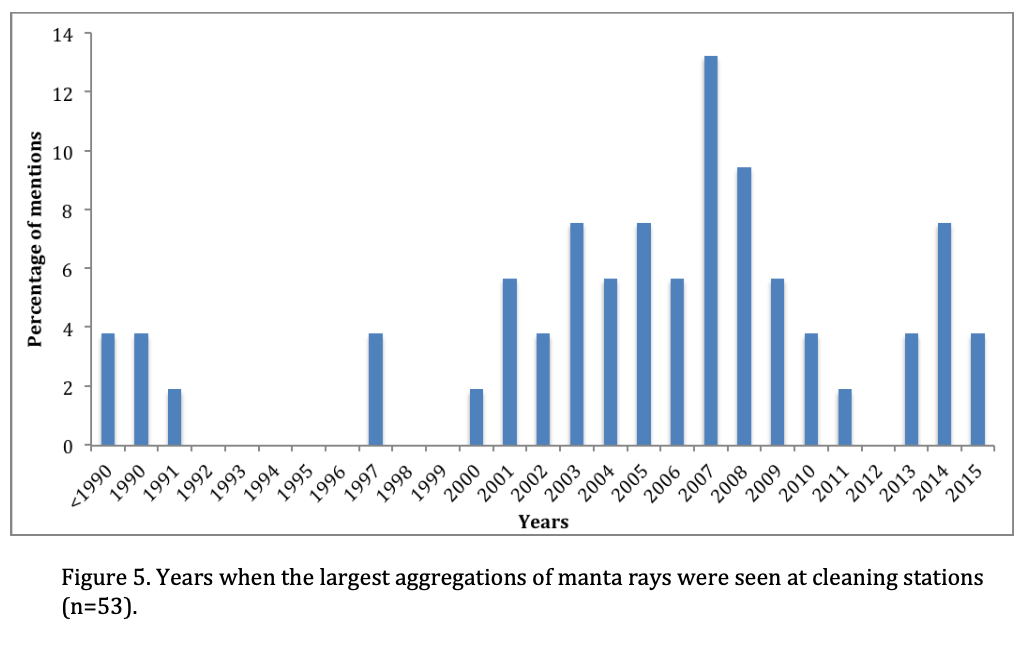

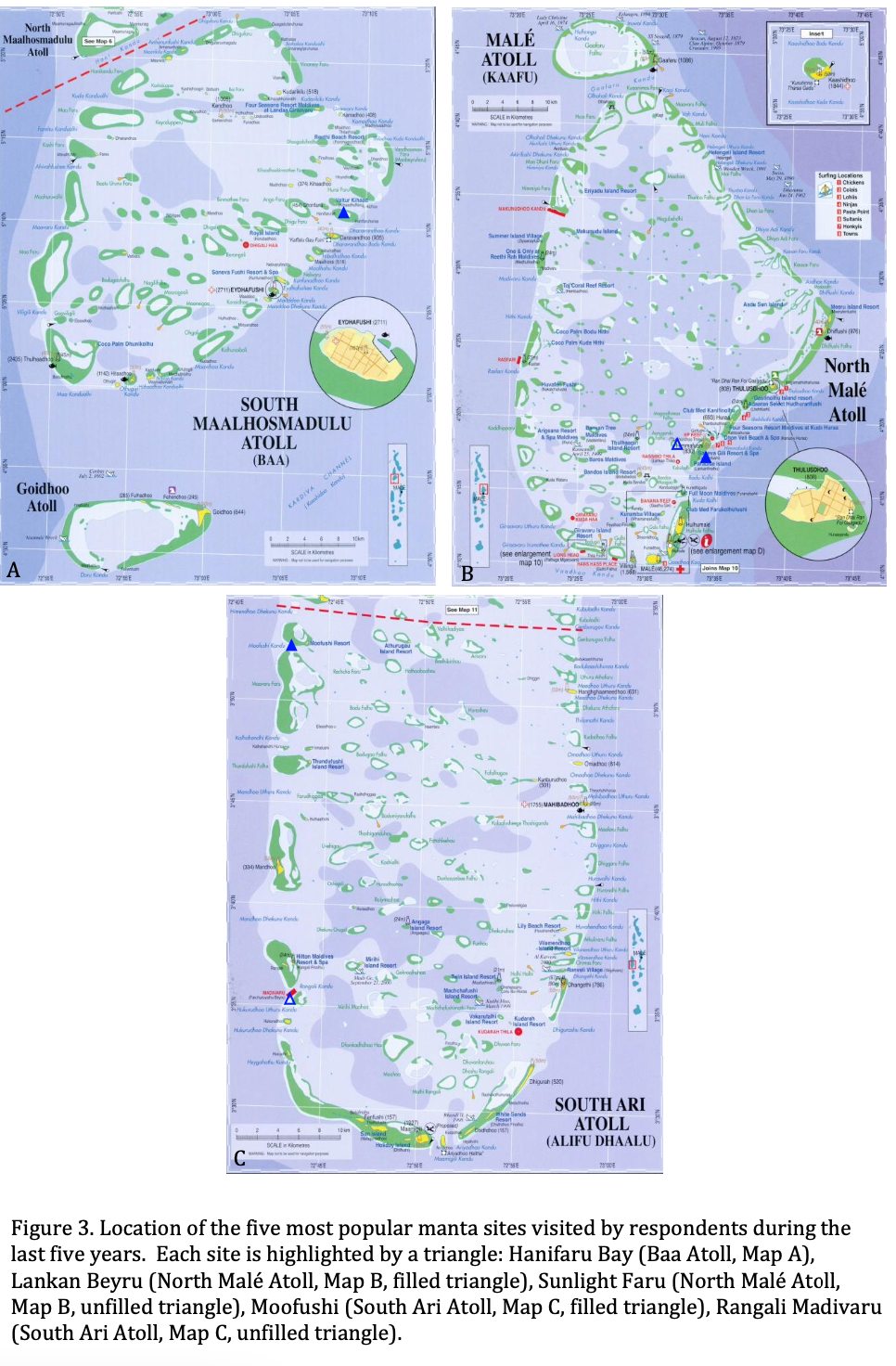
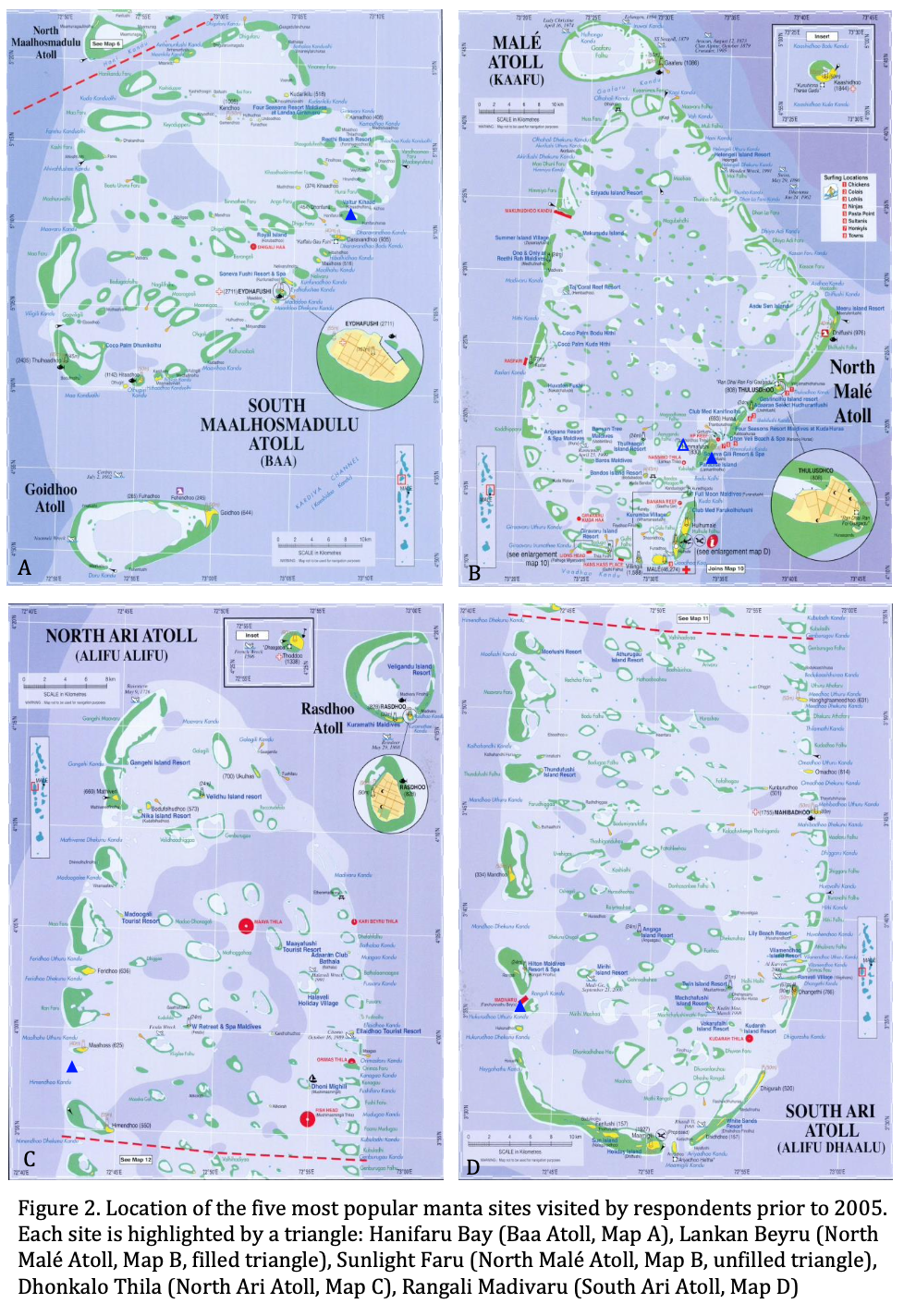
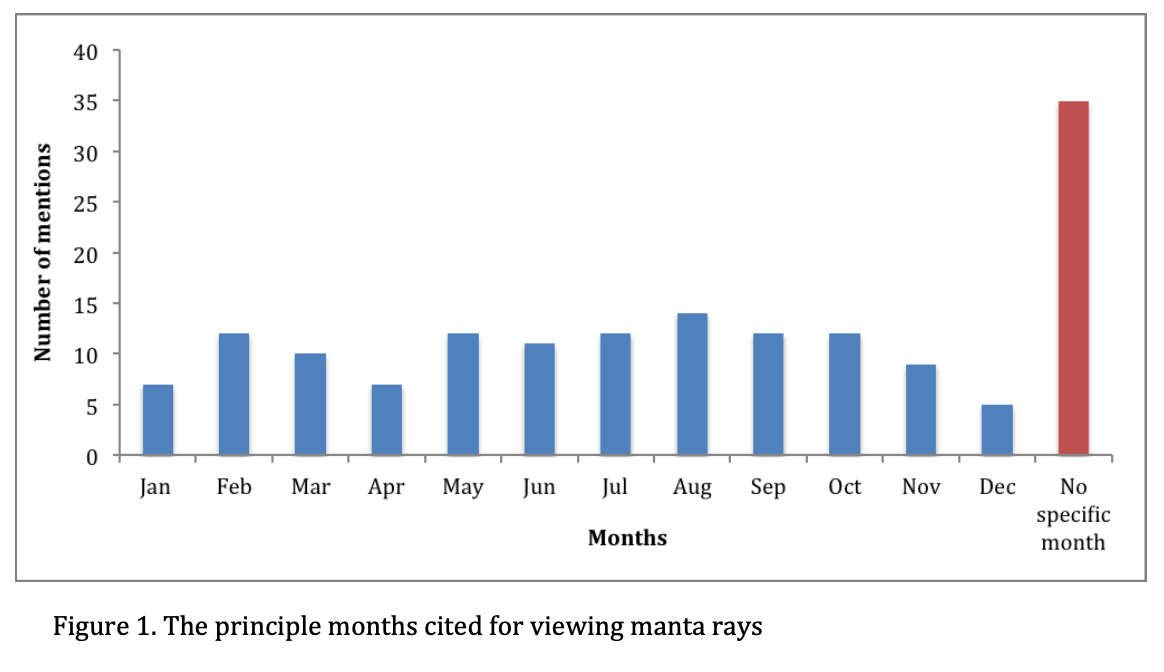
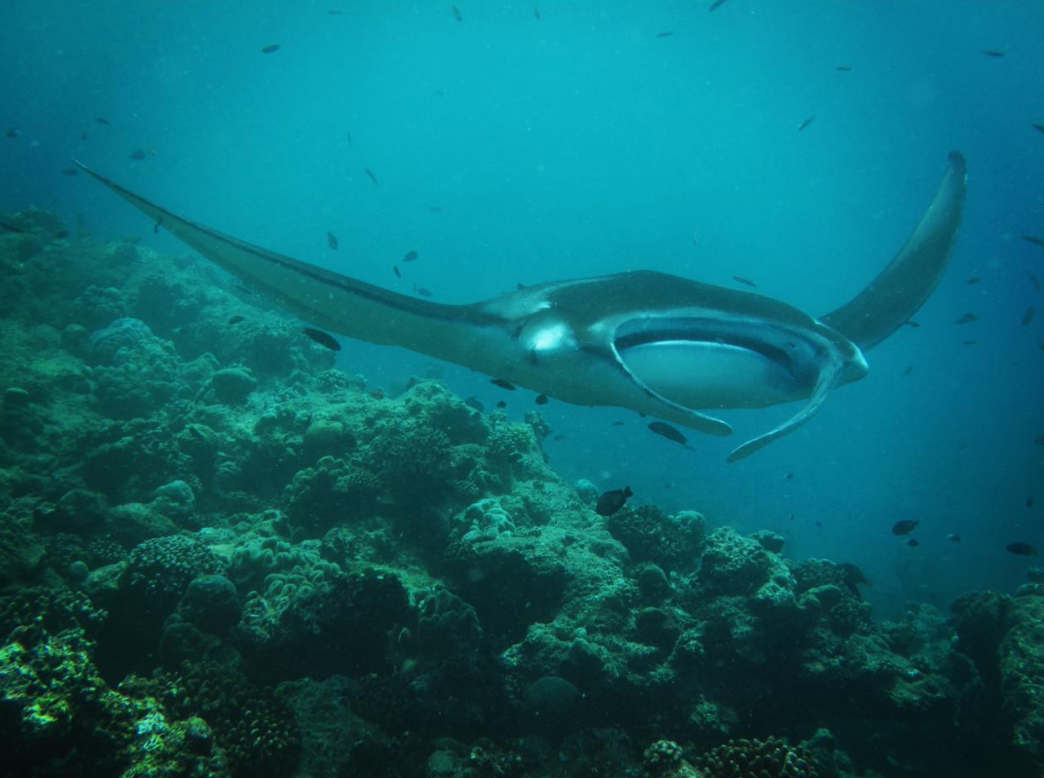
Summary: Manta rays are popular attractions for divers and snorkelers, but the demand for their gill rakers in Asian markets has led to unsustainable fishing and population decline. The Maldives Manta Conservation Programme (MMCP), formerly known as the Maldivian Manta Ray Project (MMRP), studies manta rays in the Maldives, and recent data showed fluctuations in their abundance. Interviews with experienced divers indicated that while manta ray "hotspots" remained consistent, many new sites emerged due to tourism growth. Divers reported a decrease in manta rays since 2010, and some sites showed possible anthropogenic impacts. There was dissatisfaction with current marine conservation management, emphasising the need for better stakeholder engagement.
Abstract
“Manta rays (Manta alfredi) have become a major attraction for divers and snorkelers worldwide, however increasing demand for their gill rakers in Asian markets has lead to unsustainable fishing pressure and reports of population decline. The Maldives, unlike many other Asian countries, does not have a targeted manta ray fishery and has been the focus of a decade-long study by the Maldivian Manta Ray Project (MMRP). Recent studies indicated considerable fluctuations in regional manta ray abundance, however longer-term observations are required to interpret these apparent variations more fully. Data on manta ray populations prior to 2005 are limited, however the current study extends the use of historical observations, as demonstrated by Sawers (2014), through interviews with experienced divers, to assess how manta ray distribution and abundance may have changed over time. Divers were useful indicators of manta ray distribution, and their responses suggested that ‘hotspots’ of manta activity had not changed radically over recent years. However, many ‘new’ sites have emerged, most likely because of an expanding tourism industry and exploration for novel areas. At regularly visited sites, the majority of divers (58%) perceived a decrease in manta rays since the start of their careers, and particularly since 2010. Divers also highlighted specific sites where declines may be more acute, such as Dhonkalo Thila and Lankan Beyru, where it was suggested anthropogenic factors could be responsible. Investigation of diver knowledge and perception of marine conservation in the Maldives exposed considerable dissatisfaction with current management of Marine Protected Areas (MPAs) and criticism of the lack of communication and collaboration between the diving industry and marine biologists. Nevertheless, there was general support for more conservation management initiatives, although this study emphasised the importance of improved stakeholder engagement for successful implementation.”
Author Affiliations
University of York
The Manta Trust
